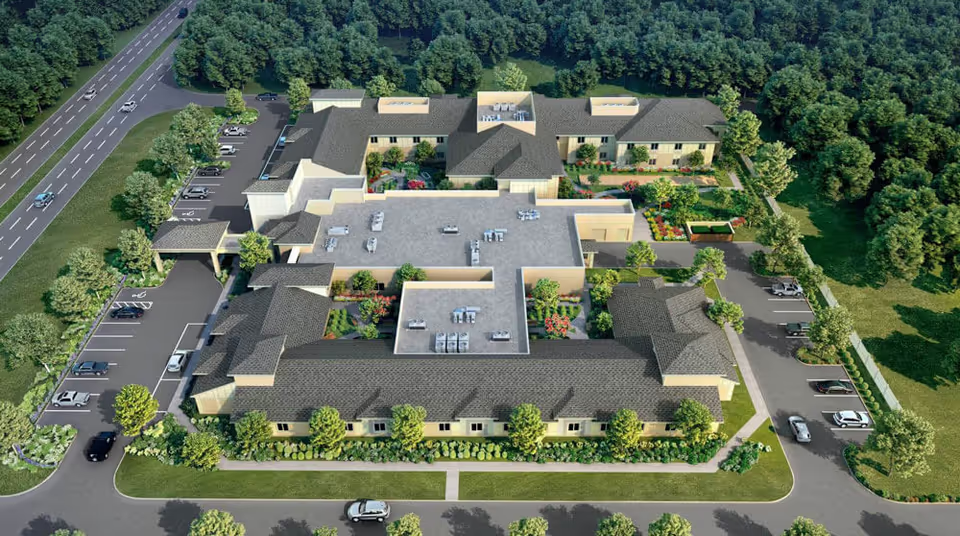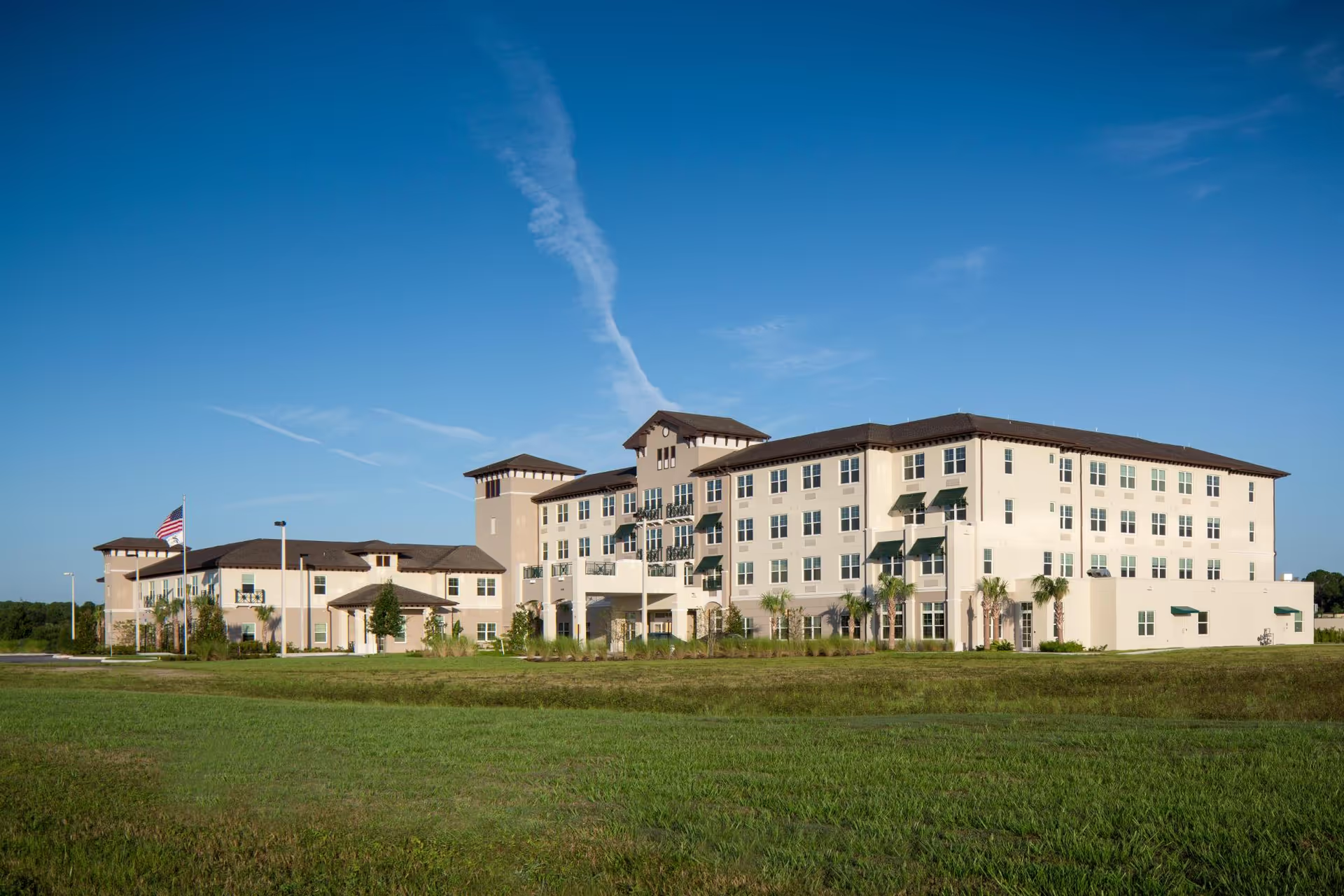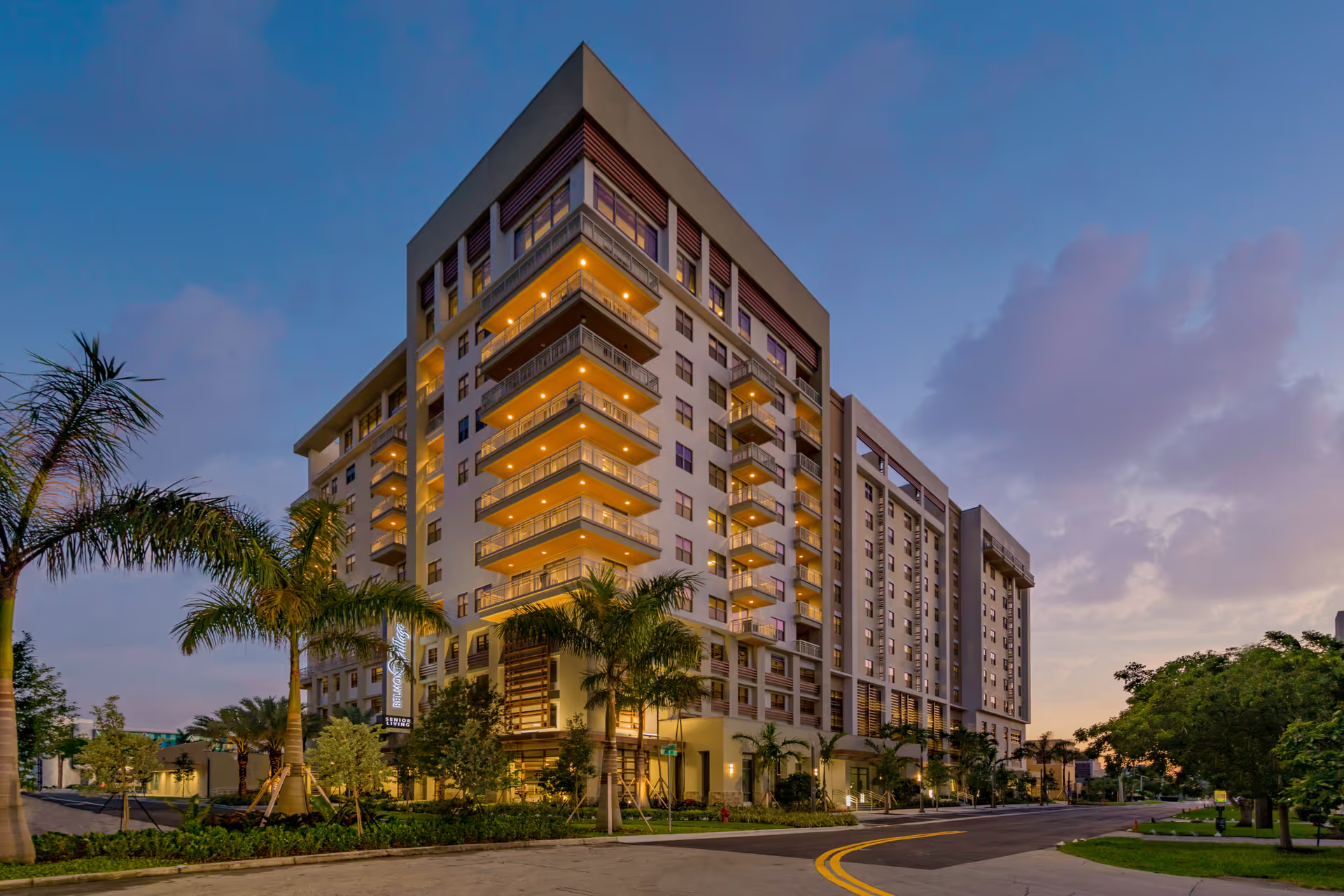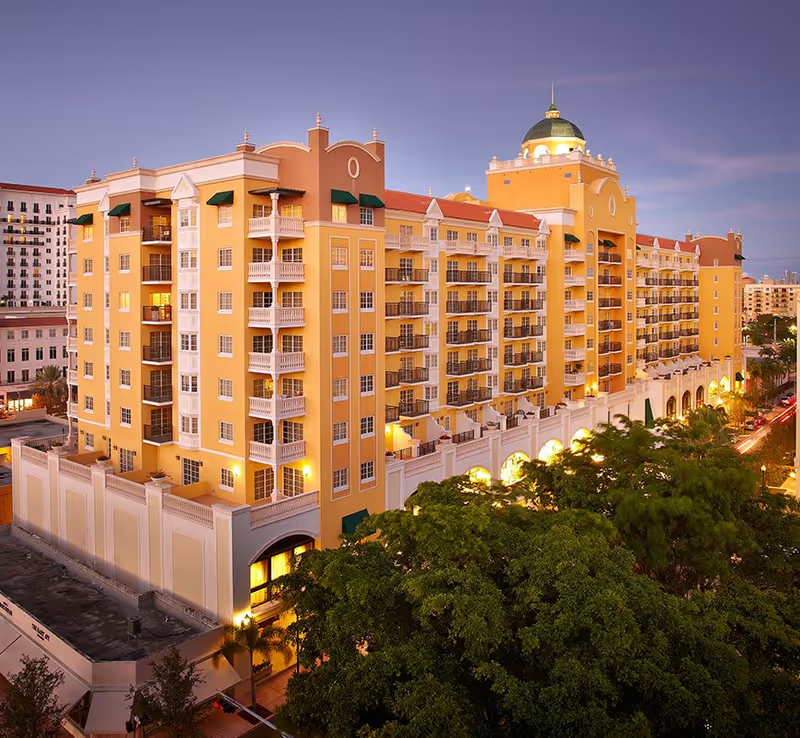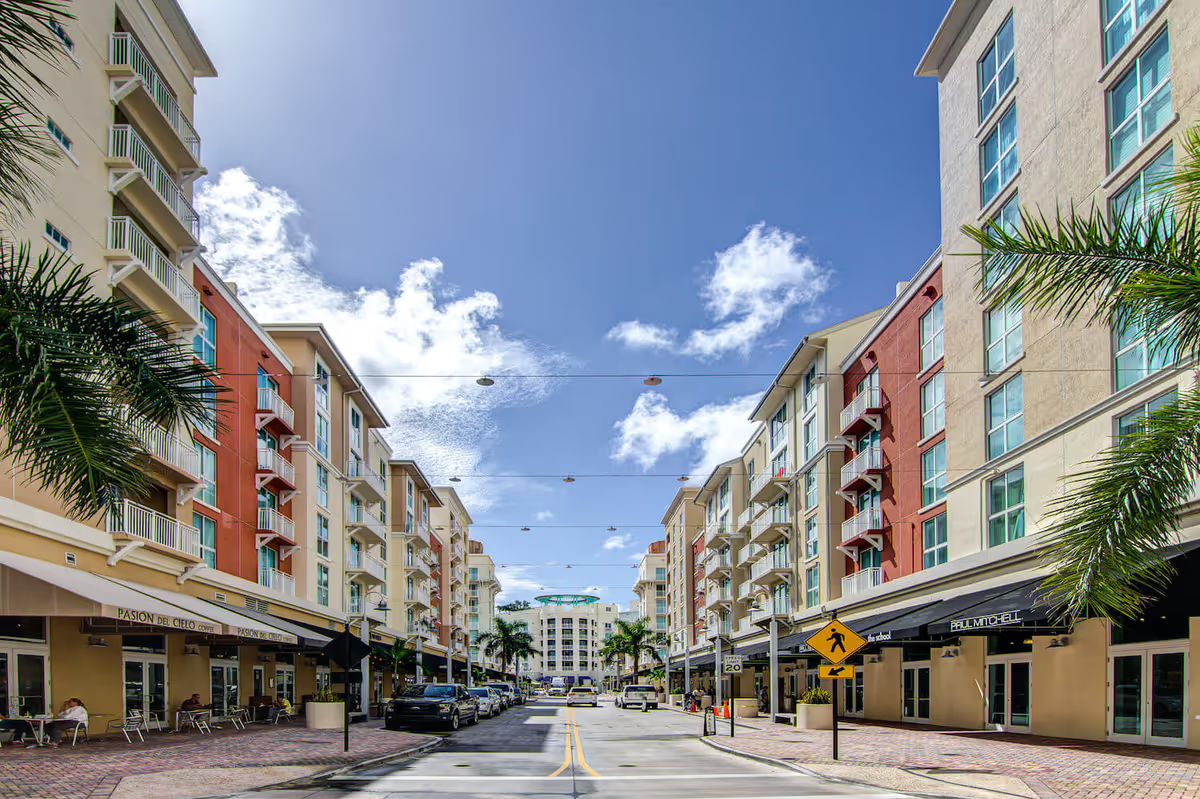Overall sentiment in the reviews is mixed but leans toward positive for amenities, location, and frontline caregiving staff while showing repeated and significant concerns around nursing consistency, medication management, and upper-level management. The facility is frequently described as a renovated, resort-like, riverfront community with beautiful views, attractive public spaces, and robust leisure amenities. Many reviewers highlight the heated pool, large covered patios/lanai, library with a fireplace, baby grand piano in the lobby, pub-style dining area, salon/beauty shop, fitness area and walking trails as standout features. Apartments are generally described as clean and nicely updated with some units offering river views and private balconies; however several reviewers noted that unit sizes and closet/storage space can be smaller than expected.
Dining and activities are consistently cited as strengths. Multiple reviewers praised restaurant-style dining, generous portions, a creative chef, and cooking demonstrations. Three-meal service and an upbeat dining environment that encourages mingling (assigned tables, pub-like dining) were frequently mentioned. The community offers a broad activities calendar—choir, bingo, Rummikub, excursions to concerts and local tours, weekly social events, and frequent outings—which many residents and families find engaging and socially beneficial, contributing to a strong sense of community and resident happiness.
Care quality and staffing are the most polarized and consequential themes. A substantial number of reviews praise the CNAs, med-techs, dining staff, housekeepers, and certain nursing leaders and administrators by name (positive mentions of front desk staff, business/service director, activity director, and some nurses). Many families described frontline caregivers as attentive, compassionate, and resident-focused, saying staff ‘‘went out of their way’’ and that the environment felt like family. Conversely, an equally large and troubling set of reviews describes inconsistent nursing care: medication errors, delayed or missing medication orders, poor records and medication management, slow or no response to call buttons (sometimes over an hour), dehydration, UTIs, infection outbreaks, and hospital transfers. Several reviewers allege neglectful behavior, verbal abuse or shouting, and unsafe care incidents. These reports often tie back to understaffing, heavy use of agency/temporary nurses, and high staff turnover, creating a pattern where care can vary dramatically depending on staffing on any given day.
Management and administration receive mixed and often critical feedback. Some reviewers praise specific administrative staff as responsive, helpful with billing, and easy to work with; others report unresponsive leadership, poor communication, broken promises, and managers bad‑mouthing owners. The Director of Nursing is a divided point—some reviews praise strong nursing leadership, while others label the same leader as arrogant or callous and cite declines in care during their tenure. Several reviewers reported improvements after management changes, while others described ongoing dysfunction, nepotism, or negative internal dynamics. Families also reported concerns about emergency preparedness (one comment about no evacuation during a hurricane), inconsistent follow-up on issues, and perceived security gaps for memory-care residents.
Safety, infection control, and attention to medical needs are imperative themes for prospective residents and families. Positive reports cite diligent COVID protocols and compassionate end-of-life care. Negative reports that document recurrent infections, dehydration, medication mismanagement, and long call-response times are serious and frequent enough to be a central concern. Many reviewers explicitly recommend confirming staffing ratios, medication administration processes, call-button response metrics, and infection-control practices during a tour. Reviewers recommended asking about the use of agency staff and recent turnover to get a sense of day-to-day reliability.
Cost and value are also recurring topics. Several reviewers feel the property is pricey—described as ‘‘expensive’’ or ‘‘hotel-like’’ in cost—and note affordability may be a barrier, though many who can afford it say it is worth the price for the amenities and frontline staff. A small number of reviewers described the community as not worth the cost due to poor nursing or administrative problems. Logistics and physical constraints were mentioned: a 12-story building with only two elevators (creates potential delays), restricted building access overnight hours (8 PM–8 AM), and some older or smaller unit layouts.
In summary, Victoria Landing is widely praised for its location, aesthetic renovation, amenities, dining, and the caring nature of many frontline staff and activity personnel. These strengths create a lively, social, resort-like community that many residents and families strongly recommend. At the same time, there is a persistent and serious pattern of concerns around nursing consistency, medication management, staffing levels, infection events, and certain aspects of management and responsiveness. These issues appear to vary over time and by shift—meaning resident experience can be excellent one day and problematic another depending on staffing and leadership stability. Prospective residents and families should weigh the clear lifestyle and amenity advantages against the reported variability in clinical care: during a tour or inquiry, specifically verify current staffing ratios, agency-nurse reliance, call-button response procedures and averages, medication administration and record-keeping practices, infection-control history, evacuation/security plans for memory care, and recent leadership turnover or improvements. That approach will help determine whether the community’s strong amenities and many positive caregiving reports align with consistent clinical safety and management reliability for a particular resident’s needs.
